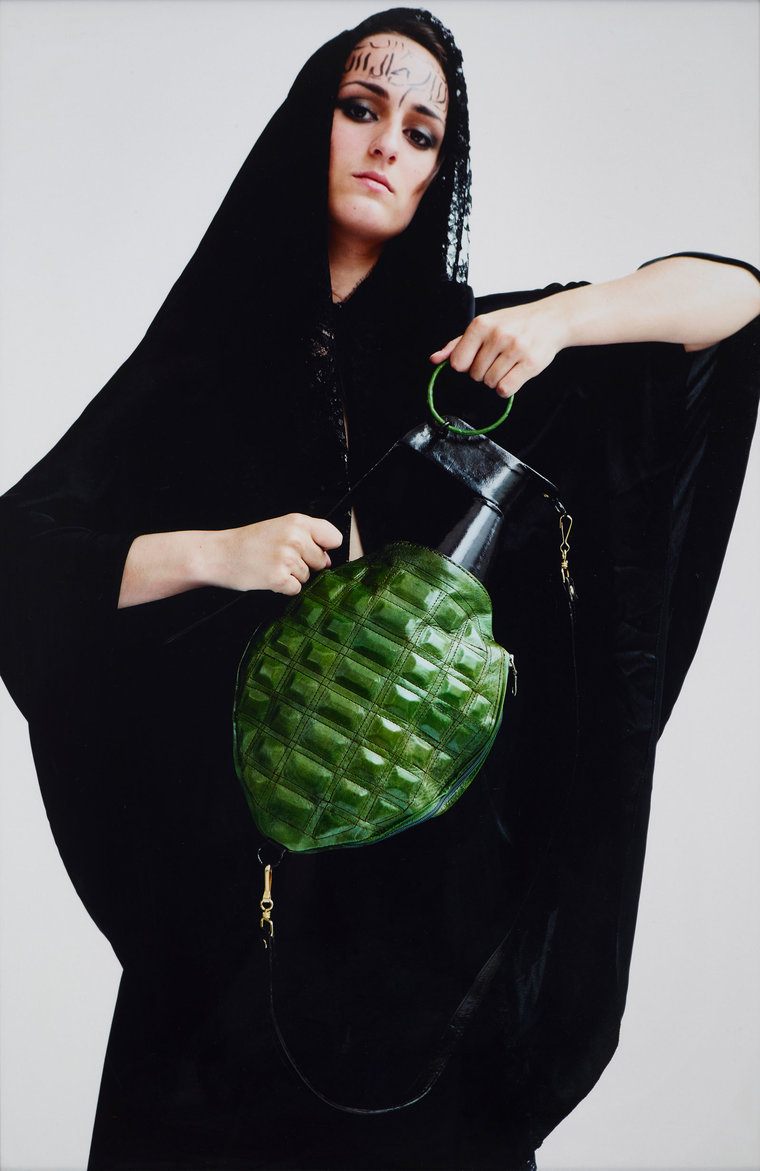Majida Khattari’s Sac à main, 2008–2009, is a digital print depicting a veiled woman holding a handbag shaped like a green grenade. The work blends fashion aesthetics with political critique. The woman’s chador and poised stance evoke classical portraiture, while the grenade-bag disrupts the image with unsettling symbolism. By merging femininity with violence, Khattari challenges orientalist stereotypes and questions how Muslim women are perceived in Western media. The aluminum surface gives the image a polished, commercial feel mimicking the glossy surfaces of fashion magazines and advertising, yet the object she carries resists commodification. This tension exposes how identity, danger, and beauty are entangled in visual culture.
A Moroccan-born French artist, Khattari’s practice is rooted in performance, photography, and sculpture. Her work consists of photography, performance, and sculpture, often using fashion-show formats to critique how Muslim women’s bodies are framed by both Western orientalism and conservative religious norms. Since the 1990s, her work has responded to France’s ongoing debate on Islamic dress, especially the headscarf in public schools. Through performance-based “fashion shows”, Khattari stages sculptural garments inspired by hijabs, burkas, and safaris to interrogate both religious codes and secular impositions on women’s bodies.
Sac à main continues this interrogation in still form, using the grenade-bag as a metaphor for how Muslim women are simultaneously fetishized and feared. Khattari’s work complicates the narrative that veiling is purely oppressive. As she stated in an interview, “The issue is not the veil itself, but what one wants to project onto it”. By presenting the veiled woman as elegant, poised, and yet visually dangerous, Sac à main confronts orientalist and media-driven stereotypes, particularly the post-9/11 association between Islamic identity and terrorism. The handbag-as-grenade mocks this flattening, suggesting that Western viewers project fear onto symbols they do not understand. Khattari refers to her method as a form of “soft provocation”, using beauty to attract and then critique. Her visual language borrows from fashion, but flips it to reveal the exploitation and misreading of cultural signifiers. In a way, Sac à main is a visual trap. It forces viewers to confront their own gaze – at once enchanted while also complicit. Through elegance and irony, Khattari challenges us to see beyond binaries of oppression and liberation.




